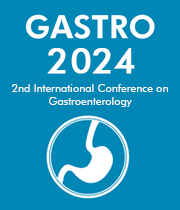Title : Liver Regeneration (LR): The treatment of liver failure and beyond
Abstract:
Liver regeneration is an ancient and realistic topic. The mechanism of liver regeneration is well described in the PHx model, and it is generally believed that multiple signaling pathways, including Wnt/β-Catenin signaling, Notch signaling, mTOR signaling, etc. are important mechanism conduction pathways for liver regeneration. However, due to the variety of etiologies and clinical manifestations of clinical liver disease, and the extremely complex pathophysiological process, the current animal model cannot accurately imitate specific human diseases, resulting in the mechanism of liver regeneration in the disease state still cannot be clearly clarified, and the relevant treatment research often deviates from the actual clinical efficacy of animal experiments. While hepatocytes are severely damaged or their proliferation is suppressed: progenitor cells originating from bile duct cells with hepatobiliary properties will be converted into hepatocytes for regeneration. Similarly, when bile duct cells are severely damaged or proliferation, hepatocytes around the portal vein are converted in situ into bile duct cells. However, such repairs are often ineffective or erroneously proliferated, such as cirrhosis nodule formation. Therefore, liver tissue structure remodeling is an important part of liver regeneration in severe liver damage, including liver failure, and the specific mechanism is currently less studied and the specific mechanism is unknown.
Clinical and animal experimental studies of cytokines such as hepatocytogenic growth factor, IL-22, G-CSF, erythrocytokin, platelet-stimulating growth factor, G-CSF and other single or combined for liver damage or liver failure have achieved some efficacy and progress, but the overall effect is unsatisfactory, and some are even controversial. Clinical research on stem cell transplantation such as bone marrow stem cells, mesenchymal stem cells, stem cell reinfusion for the treatment of liver failure and end-stage liver disease has been carried out for many years, and the bottleneck problems such as how stem cells can achieve targeted differentiation in vivo and complete liver tissue structure remodeling have not yet been resolved, resulting in the prospect of widespread promotion and application. In 2013, a 4mm "liver bud" (iPSC-LBs) of humanoid stem cells was built into mouse mesenteric membranes, successfully saving fatal liver failure, which is a sensational breakthrough in liver regenerative biology research, and the cultivation and transplantation of "liver-organoid" in vitro is likely to be an important way to successfully treat patients with liver failure in the future. Especially?it has achieved on the clinical study of liver organoid combined with biological artificial liver. In recent years, with the development of modern science and technology, the continuous progress of material research, 3D printing technology (including 3D printing and 3D bioprinting) is emerging, and in vitro stem cell culture "liver organoid" similarities, the future can be used for both biological artificial liver and liver transplantation, the same is a development direction worth looking forward to.
Audience Take Away:
-
The audience will be able to learn about the advances of liver regeneration, including mechanism, and clinical research.
-
This would help hepatologists in their clinical works on the treatment of liver injury, and liver failure.
-
To guide liver clinicians and researchers to further develop clinical research directions and methods of liver regeneration.



